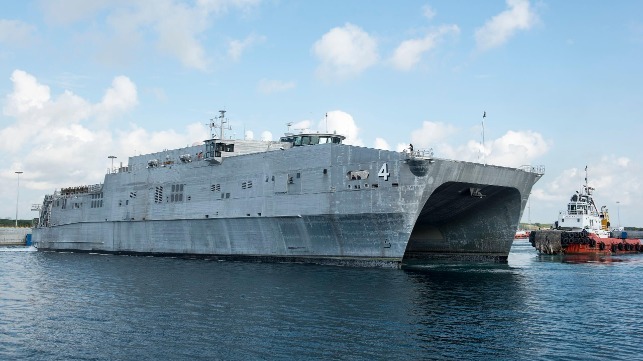U.S. and UK Are Sidelining Fleet Auxiliary Ships Because of Crew Shortages

Both the Royal Navy's Royal Fleet Auxiliary and the U.S. Navy's Military Sealift Command are sidelining some of their ships because of crew shortages, according to new reports. Both organizations have had serious recruitment and retention issues for years, and the decision to stack tonnage has been long in coming.
Not enough mariners, not enough leave
Military Sealift Command is the civilian-crewed auxiliary force for the U.S. Navy, and its vessels keep the rest of the fleet running. MSC dry stores ships and fleet oilers provide ammunition and fuel to keep surface combatants in the fight, and an array of special-purpose auxiliaries - submarine trackers, surveillance ships, salvage tugs and other specialized vessels - serve non-combat needs that would be expensive to fulfill otherwise.
Among U.S. merchant mariners, MSC is known for good pay and long contracts. Because of a persistent personnel shortage, a four-month scheduled hitch can turn into eight months or more while the mariner awaits the assignment of his or her relief. Due to the Pentagon's vacation accrual policies, the limited leave that is available may be partly unpaid.
These conditions have been common knowledge for decades, but in a tight market, skilled mariners have many options in commercial maritime and may select a private employer with a more family-oriented rotation schedule. According to USNI, MSC's roster has thinned, and it now has about 1.3 mariners for every seagoing billet - too few to provide consistent rotations for the 4,500 crewmembers who are on board at any given time.
To improve this ratio, MSC is seeking approval for a plan to sideline all 12 of its actively serving expeditionary fast transports (EPFs), along with two civilian-crewed sea base ships, two Lewis & Clark-class dry cargo replenishment ships and one fleet oiler, according to USNI. By cutting as many as 700 seagoing billets, MSC could boost its mariner-to-billet ratio from 1.3 to 1.5 and improve quality of life for its seagoing personnel.
Some of the sidelined vessels are among MSC's newest and best-known ships. The expeditionary fast transports are high-speed intratheater fast ferries, built in aluminum for light weight and fitted with a ramp for vehicle loading. They have a capacity of 600 tonnes, a top speed of up to 45 knots and a 26-member civilian crew, and are commonly used for goodwill port calls and relief missions.
As seen previously in the slimming-down of the Littoral Combat Ship series, the EPFs will be exiting active duty service decades ahead of schedule. The oldest active vessel in the EPF series is just over 10 years old, and the newest has been in service for less than 10 months. Three older hulls in the series - USNS Spearhead, Choctaw County and Fall River - have already been warm-stacked.
The Navy has another five EPFs on order with an upgraded and enlarged "medical ship" design, and will continue to take new deliveries of the class for years to come.
Royal Fleet Auxiliary sidelines multiple vessels
On the other side of the Atlantic, America's closest European ally is having similar staffing issues for its naval auxiliaries, though for a different reason. The Royal Fleet Auxiliary's payscale has not kept up with inflation for years, and RFA officers calculate that they have accumulated a 30 percent cut in purchasing power since 2010, while their peers in commercial maritime have seen regular raises.
The auxiliary's union has called time on long-stalled pay negotiations, and it launched an unprecedented fleetwide strike action on August 15. It is set to go out on strike again on September 3, the UK's Merchant Navy Day.
The effects can seen in the RFA's shrinking headcount, according to Navy Lookout. Recruitment is not keeping pace with retirements and departures, and the RFA hasn't been able to deploy several ships because it lacks the personnel to fully crew them. RFA Tiderace, a fleet oiler that entered service just six years ago, is cold-stacked at Cammell Laird because of a crewing shortage. Crew generation and workup for the other remaining vessels in the series, RFA Tideforce and Tidespring, has also reportedly been delayed. And the newly-acquired mine countermeasures vessel RFA Stirling Castle has been sidelined by a combination of crew shortages and maintenance issues.
"Although a more rewarding career than most jobs in the merchant fleet, RFA remuneration is way below what sailors can earn in the commercial shipping sector. If the total collapse of the Royal Navy's critical logistic enabler is to be avoided, then pay probably needs to be increased by around 30% to be competitive," Navy Lookout warned.
No comments:
Post a Comment